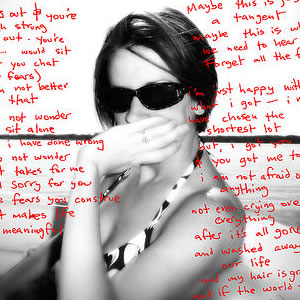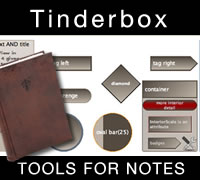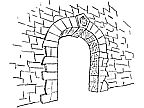Download Tinderbox now!
Making Better Notes
- Latest Changes
- Principles
- About These Notes
- Always have a pen
- Calendars are for Appointments
- Choose Your Pen
- Commonplace Book
- Displacement Activity
- Fountain Pens
- Front Matter
- Good Home
- Improve The Moment
- Incremental Formalization
- Information Triage
- Meta Space
- Moleskines
- Permanent Record
- Prep Your Pages
- Reading
- Sketching in Airports
- Storm Sort
- Tinderbox: Automatic Prototypes
- Tinderbox: Color Schemes
- Tinderbox: Prototypes
- To Do
- Weekly Sweep
- Write It Down
- You Need Two Journals
- Other Resources
![]() Subscribe : get updates in your news reader
Subscribe : get updates in your news reader
Keep in touch!
Keep in touch with new ideas and new tools! Moderated email announcements, concise, and timely. We never share your email address.

© 2005 by Kris Sikes. Reproduced by permission of the artist
by John Stephan
If you’re looking for a new way to interact with paper, consider a fountain pen. Fountain pens are a joy to write with.
This is a basic primer on finding the right fountain pen for you. Many resources on fountain pens are available.
Taking a Test
Because the perfect pen for me could be completely wrong for you, the key to finding the right fountain pen is finding a good pen shop. Any good pen shop will let you try a fountain pen before you commit to buying it. This is the critical phase. You simply cannot know the right pen for you without writing with it. Here in Boston, the place to go is the Bromfield Pen Shop,in DC it's Fahrneys. Fahrneys has a brisk catalog business which is great for getting refills, inks, pads, and the like. Both are also great places to take your pens for a tune-up, which is useful if you've got an old one with ancient ink in a drawer. In addition to suggesting pens for you, they will also show you how to fill the pen, how to use converters, and suggest the right ink for you.
Good pen shops sell antique or used pens. These are wonderful for collectors and can provide an authentic “retro” experience, but remember that as you write with a decent fountain pen, especially one with a somewhat softer nib , the nib molds itself to the way you write. This is why you should never lend your fountain pen to someone else. The nib is the key to your connection with the pen and you don’t want anyone else mucking about with that.
The Nib
The nib is the essence of any fountain pen. It is the reason you buy a fountain pen. Nothing writes like it. When it's right – the right pen, writing on the right paper with the right ink - it just goes. You lose consciousness of the thing you are writing with. The key is finding the right nib for you, whether flexible or stiff, wide or narrow, straight or chiseled.
Nibs are typically steel, gold, rhodium, or some combination. While the material matters, it doesn’t matter as much as you might think. I have used steel pens that write beautifully (e.g. Rotring 700). The key is how the nib is shaped and how it performs in your hand. This is, again, why you need to take a test-write.
Some nibs are quite stiff, like many from Waterman. Some are really flexible, such as Omas' OGIVA and the Namiki Falcon. Some are, of course, in-between. If you write with a heavy-hand, a flexible nib's likely not for you. If you love to see the "thicks and thins" of your letters you'll definitely want to look for a more flexible pen.
Don’t try and change your writing to the pen. Write naturally when you test-write and you’ll stand a better chance of finding the right pen for you. It’s not you; it’s the pen. Just because it’s a Mont Blanc and costs a week’s wages doesn’t mean its better than that $100 Parker. If the Parker feels better, it is better.
There's the question of nib size: extra-fine, fine, medium, bold. The right size is determined by the size of your handwriting. If you write small, look for a finer point; a wider nib will make your letters illegible. Namiki's fine points - because they are tuned for kanji letters - are among the clearest around. But a fine nib may feel "scratchy" if you have a light touch or if the angle at which you hold the pen is less than straight-on.
Then there's nib shape. There are italic nibs, chisel-point nibs, and oblique nibs. They’re great for calligraphy and the oblique ones are often favored by lefties. Your pen dealer can show you options.
The Barrel
After the nib, the size and the weight of the pen is important. The ball point made today's slender pens possible, but many people actually prefer the heftier feel of traditional fountain pens.
Thickness and weight don't have to go together. For example, if you have big hands or long fingers, you'll probably prefer a thick pen. Want a light pen, too? No problem: there are dozens of pens made with celluloid barrels - beautiful to look at and surprisingly light. Want big and heavy? No problem: there are metal barreled pens that are either steel or brass. Really thin? No problem. Custom choice is the big advantage of fountain pens. It's what you pay for.
The Ink
Of course, another reason you buy a fountain pen is because you get to choose your ink. Bromfield carries hundreds of inks and has a binder showing how each of the inks they carry looks on paper. You can then find just the right blue or the sepia that has just the right look.
Cost
Good fountain pens are pricey, but only to a point. You can buy very good pens for less than a hundred bucks.
You can spend much more, but beyond about $250, performance really does not increase. Cheap ones often write as well as the really expensive ones. A $3000 limited-edition may look exquisite, but the pen won't write any better than a $200 pen.
Myself, I like a smooth nib, somewhat flexible, generally with fine points. My pen of choice is a Pelikan 400 (Fahrney's). I have a fine and an extra-fine. These are my everyday pens, with different inks in different colored pens so I know when I’ve got the extra-fine with the brown ink or the fine with the blue ink.
Drawbacks
You have to refill them a bit more often than with ballpoints or rollerballs, but that's not a big deal. Some take cartridges, so it’s just a matter of swapping one out. Otherwise you’ll need your ink bottle at hand and it's good to carry a spare if you're going to be away from your ink for a while. A fountain pen is also not a good mix with thin paper (e.g. Moleskine) because it lays a heavy line and will bleed. But even the best paper is relatively cheap, so you can find the kind you like without too much trouble. If you’ve got a notebook you love and are looking for a pen to match, by all means bring it to the pen shop. They’ll have you write on their pads which are designed to show off their pens, but they also won’t mind in the least if you break out your own notebook to see how the ink goes.
I don’t tend to travel with fountain pens, because I use a Moleskine for my travel journal and prefer not to take really nice pens where I might lose them. People say fountain pens leak on airplanes. This may be urban myth. If you fill it before you fly and are careful opening it the first time after pressurization you should be okay. But it's also good to have some AMODEX on hand (Bromfield). Accidents happen.
There's nothing like writing with a fountain pen. My best advice is test drive, test drive, test drive. It's the only way to find the pen for you.



 Eastgate Systems Inc.
Eastgate Systems Inc.